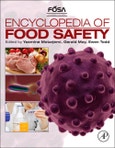With the world's growing population, the provision of a safe, nutritious and wholesome food supply for all has become a major challenge. To achieve this, effective risk management based on sound science and unbiased information is required by all stakeholders, including the food industry, governments and consumers themselves. In addition, the globalization of the food supply requires the harmonization of policies and standards based on a common understanding of food safety among authorities in countries around the world. With some 280 chapters, the Encyclopedia of Food Safety provides unbiased and concise overviews which form in total a comprehensive coverage of a broad range of food safety topics, which may be grouped under the following general categories: History and basic sciences that support food safety; Foodborne diseases, including surveillance and investigation; Foodborne hazards, including microbiological and chemical agents; Substances added to food, both directly and indirectly; Food technologies, including the latest developments; Food commodities, including their potential hazards and controls; Food safety management systems, including their elements and the roles of stakeholders. The Encyclopedia provides a platform for experts from the field of food safety and related fields, such as nutrition, food science and technology and environment to share and learn from state-of-the art expertise with the rest of the food safety community.
Table of Contents
280 chapters, which may be grouped under the following general categories:- History and basic sciences that support food safety
- Foodborne diseases, including surveillance and investigation
- Foodborne hazards, including microbiological and chemical agents
- Substances added to food, both directly and indirectly
- Food technologies, including the latest developments
- Food commodities, including their potential hazards and controls, and
- Food safety management systems, including their elements and the roles of stakeholders.








